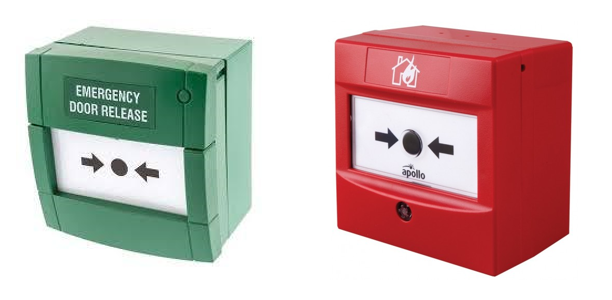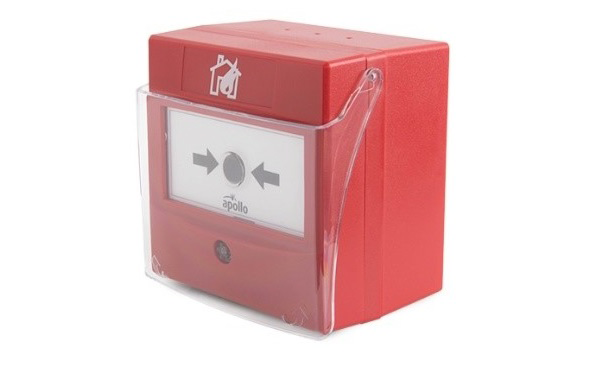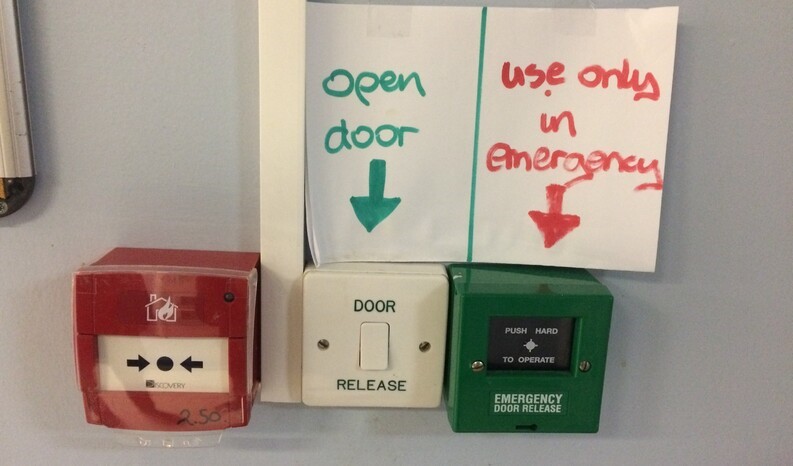
How do you reduce the risk of Manual Call Point false alarms?
We spoke to those in the field about emergency call outs, and the most common causes of them. Our research, supported by over 130 engineers, led us to similar conclusions as BRE.
What are False Alarms, and how do they occur?
The term false alarm is used widely throughout the industry to describe an unwanted activation of a fire alarm system.
False alarms can be caused by:
- The build-up of dust on the detector
- Steam and other fumes activating the detector
- Burnt food e.g. burning toast
- Incorrect system testing procedures
- Unwanted Manual Call Point activations
This poll is a snapshot of what those in the business consider to be most common.
Manual Call Point related false alarms:
- User error (incorrect testing)
- Malicious activation
- Accidental activation
- Opportunistic activation
Manual Call Points (MCPs) and their misuse are also a significant factor. Malicious activation, i.e. vandalism, is an incredibly small percentage of the false alarms generated from MCPs. This may be contradictory to what you might think, but in actual fact, the more common false alarms are made from accidentally knocking into them or confusing them for electronic door switches. The images below show how easy a mistake could be made if you weren’t paying attention.

How much do False Alarms cost a year?
False alarms cost the UK industry an estimated £1 billion a year*! Fire and Rescue services don’t know whether an alarm is genuine or not, which means they must respond to each and every one of them as if they were a real fire. This is costly, a waste of time, and dangerous. Time spent dealing with a false alarm is time spent away from a real fire.
Unwanted MCP activations count for approximately 12.7% of all false alarms: around 37,000 a year. That costs about £127 million. Every single year. This is an incredibly high amount, and with a little extra thought and care this number could be reduced or even eliminated completely.
*Source: https://www.fia.uk.com/news/blogs/how-reducing-false-alarms-could-save-the-uk-150-million.html
How can you reduce Manual Call Point (MCP) false alarms?
There are several ways to help prevent MCP activated false alarms.
People knocking into the devices is one of the most common causes, this can be alleviated with a Protective Cover (Hinge Cover)**; these are clear plastic covers that need to be moved, often lifted, to gain access to the frangible element. This stops activations occurring if someone bumps into the device, as the cover stops the button being pressed.
This protection doesn’t prevent someone from activating it in the event of a real fire. It isn’t locked down or restricted, and triggering the alarm is done the same way as any other MCP. All you have to do is simply lift the cover and activate it.
One action turned into two, a straightforward adjustment, but one that could potentially save millions of pounds a year.
**Source: https://www.fia.uk.com/uploads/assets/uploaded/d7a5ee34-2243-4d9e-bfef9c4f2bea3839.pdf

Note: In the latest update to BS5839-1, it is recommended that all Manual Call Points be fitted with covers to reduce false alarms.
Education of staff, residents and of regular visitors could aid in reduction. As mentioned above, sometimes it might not be clear which button represents fire and which opens the door. Although colour coded, some extra clarification may be needed, such as the below (image taken from Imagination Factory):

If you’ve had frequent false alarms due to people pressing the wrong button, then consider re-siting the device. It may be better for it to be placed in a more suitable position, to either prevent misunderstanding or to avoid high traffic / high potential collision areas. This should be undertaken in line with a fire risk assessment.
Schools are a good example of Opportunistic activations. Kids see a big red button and that unwavering urge to cause a little mayhem takes over. A protective cover could deter this behaviour, at least marginally. Extra education could also help, making clear what pressing that button costs the fire department and school, and how each false call-out could result in disaster elsewhere.
There are also other protective covers on the market that emit a sound when the cover is lifted, immediately bringing attention to it. This is another way to deter opportunists.
Adhering to correct testing procedures is paramount to reducing unwanted alarms. Technical Support are inundated with calls on how to reset an MCP, and the system. All the while the sounders are ringing in the background. Understanding the testing and resetting methods for your MCP device will make sure that you’ll not be stuck wondering what to do when everything alarms.
Another common mistake is not informing the appropriate response centres when undergoing maintenance / alarm testing. This miscommunication can lead to responders being dispatched when routine maintenance is undergone. Make sure to inform all parties when starting maintenance, or performing an alarm test.
The road to eliminating false alarms is a long one. It involves product innovation, education, and sturdy regulation. Finding the balance between sensitive fire detection and transient signal rejection is the ultimate goal. However, Manual Call Points take up a large percentage of unwanted activations, and with a little education and understanding of the issue, these could be prevented.